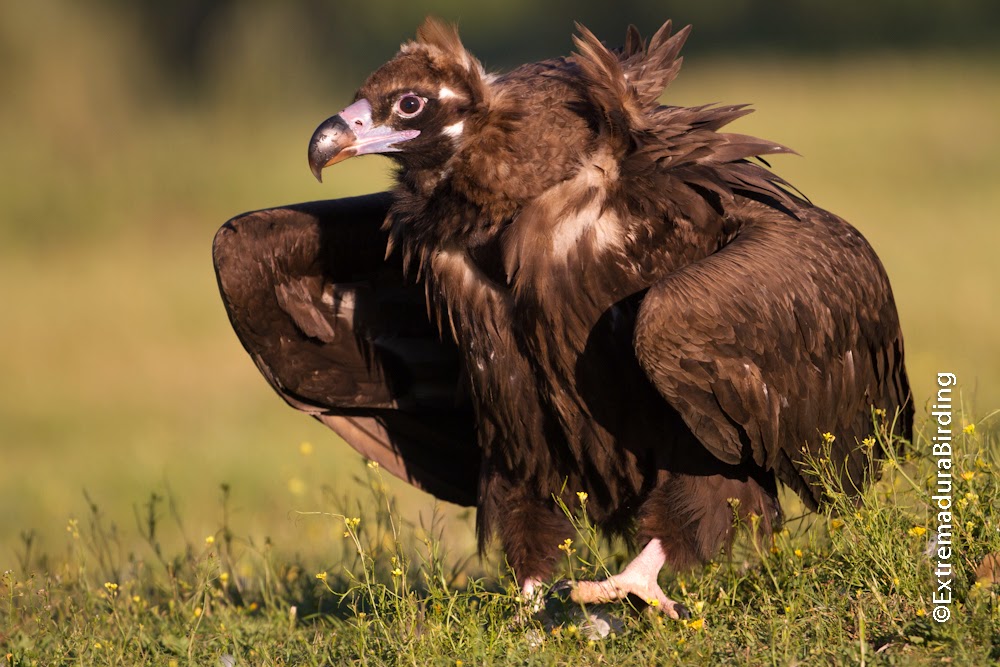At a distance it is a fascinating spectacle. Seen from close up, it is quite amazing, and this is made possible through various hides across Extremadura. Recently we spent a morning in a hide and here are a few of the 2,000 photos we took!
We are in the hide before sunrise, and the first birds to show are Kites - mainly Black with a few Red - and a few Raven.
The Kites and Raven are present throughout the feast. They make the most of the opportunity to grab as much as they can before the vultures make a move.
The next bird to show up is the Egyptian Vulture.
and then the first Black Vulture
In flight they are elegant, particularly when soaring on a thermal, but landing is often a clumsy affair.
We are lucky on this morning, as the numbers of Black Vulture build steadily. The maximum count is 35, with a good number of juveniles.
They are surprisingly elegant birds when seen close-up,
When approaching the meat the Black Vultures prance in a menacing manner, recalling a stage villain!
They haunch and posture a great deal.
Then the first Griffon come in, without preliminary circling as there are a reassuring number of birds already on site.
After a short time looking around the first bird moves in to feed, and it is like the starting pistol at a sprint.
As happened with the Kites and Ravens, there is plenty of aggression on show.
The Black Vulture has the stronger hand, or maybe we should say wing, with a wingspan and weight that outweigh the Griffon. This photo gives an idea of how much bigger than the Griffon the Black is. Here we see a Griffon and an Egyptian dwarfed by the spread wings of a Black Vulture.
Nevertheless, when standing calmly side by side, the size difference does not appear to be that great.
The chance to see the Griffon at close quarters shows a more appealing side than the gore-dripping beak.








































.jpg)